Rotoroa Island, off the coast of New Zealand is tiny, at just 82 hectares (200 acres), but don’t let its diminutiveness fool you: big things are happening here.
Over the past few years the island has become the site of a quiet, but grand, conservation experiment. What would happen if you populated an island with a whole suite of endangered species, some of which were never found there to begin with?
And what would happen if you didn’t fence the island off and keep pesky humans out, but let people – school groups even – tramp through the grounds?
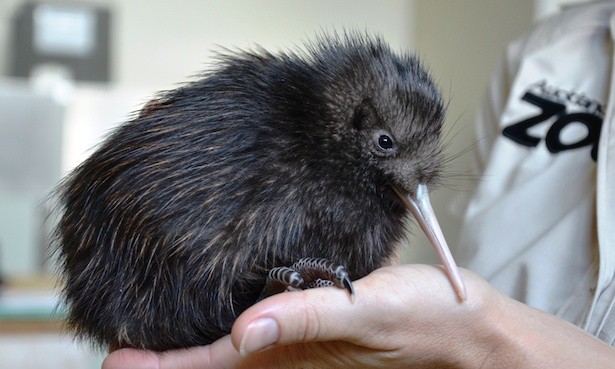
Across most of our planet, truly wild, unmanaged places are a thing of the past.
Onnie Byers
“We are deliberately aiming not to recreate an ecosystem, but to create an ecosystem anew,” says Jonathan Wilcken, the director of Auckland zoo. “We don’t frankly care very much whether those species existed on Rotoroa Island.”
Wilcken’s words – a shot across the bow of traditional conservation – marks just how radical and interesting the experiment on Rotoroa Island has become. The zoo has partnered with the island’s private mangers, the Rotoroa Island Trust, to conduct this wild endeavour: creating a new, managed ecosystem on a patch of land rising from the North Island’s Hauraki Gulf.
Wilcken adds: “Nor do we care very much if the species could sustain themselves if we weren’t there to manage them.”
In a 64-page management document, conservationists have outlined big plans to bring 20 species to the island over the next few years. They have already introduced four in less than 12 months. The document also details how conservationists will meticulously manage the environment to give their new arrivals the best chance of thriving.
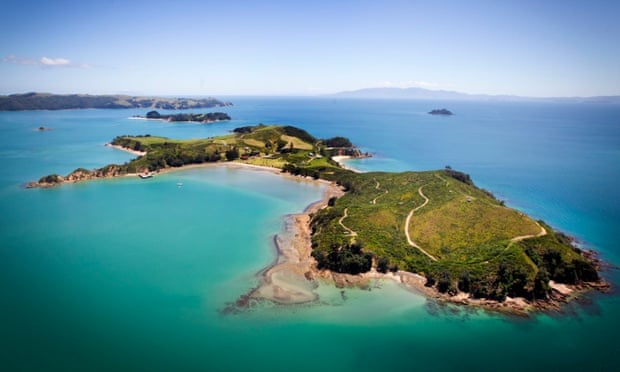
“Across most of our planet, truly wild, unmanaged places are a thing of the past. Human activity has altered landscapes and ecosystems to a point where intervention is necessary if we are to maintain biodiversity and sustain a healthy planet,” said Onnie Byers, the chair of the Conservation Breeding Specialist Group, which is playing an advisory role to the project. “To make a meaningful contribution to the long-term conservation of biodiversity we need to explore new ways of integrating across the spectrum of management from wild to captive. This project does just that.”
Kiwi origins
Before it became a conservation experiment, Rotoroa Island was a treatment facility – literally. In 1908, the Salvation Army bought the island for a mere £400 and set up a drug and alcohol treatment centre for men – a nearby island, Pakatoa, was for women. For nearly a 100 years, men sought recovery on Rotoroa until the facility closed in 2005.
Auckland Zoo employee, Michelle Whybrow, with kiwi during public release on Rotoroa.
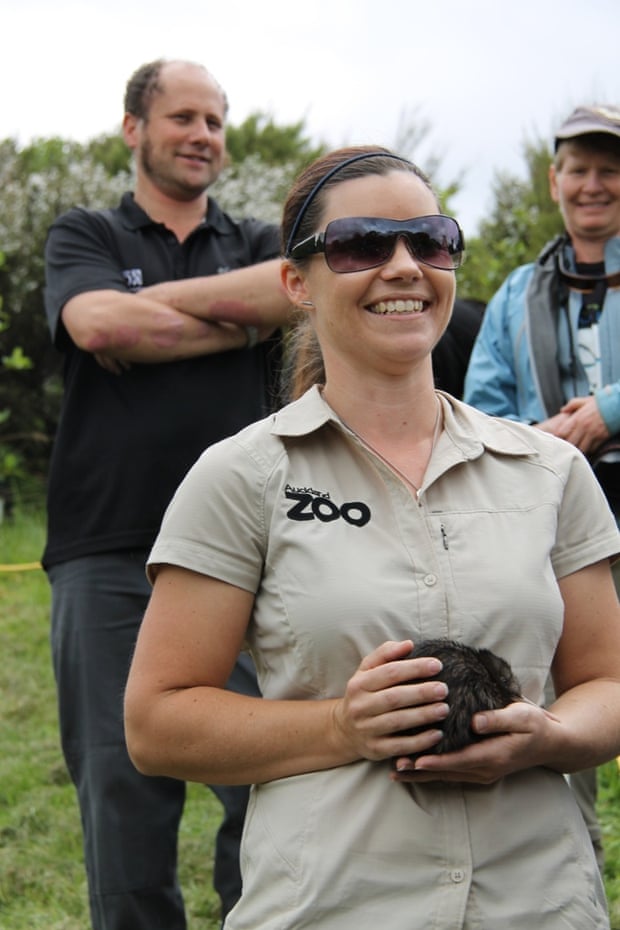
Three years later, local philanthropists Neal and Annette Plowman signed a 99-year lease for the island, which is still owned by the Salvation Army, and created the Rotoroa Island Trust. The Plowmans’ goal was essentially to give the island back to all New Zealanders. Today Rotoroa is managed as an arts, heritage, and, yes, conservation centre.
The “rewilding” experiment on Rotoroa began with kiwi. Not actual kiwi at first, but just talks of kiwi. The trust approached Auckland zoo about the potential of bringing New Zealand’s most famous bird – and one threatened with extinction – to the island.
“They came to us and said we just want to get kiwi on the island. ‘Why? Why do you want to get kiwi on the island?’ We get down and start talking about the island and beginning to tease out some of what they were wanting to achieve in broader terms,” Wilcken explains.
It was from these early conversations that an idea sprouted: why stop at kiwi? Why not fill up the tiny island with threatened New Zealand fauna?
New Zealand has long been known as a breeding ground for conservation experiments. But millions of years before people arrived on the islands it was already the site of a wild evolutionary experiment.
New Zealand oddities
Biologically speaking, New Zealand is one of the most distinct large land bodies on the planet. Amazingly, the country – made up of two major islands, the north and the south – was never successfully colonised by land mammals before humans arrived (in fact the only native mammals on the islands are bats – some of which have evolved to forage on the ground as well as fly). Instead, the islands were filled with an incredible diversity of birds taking up the niches occupied by terrestrial mammals elsewhere.
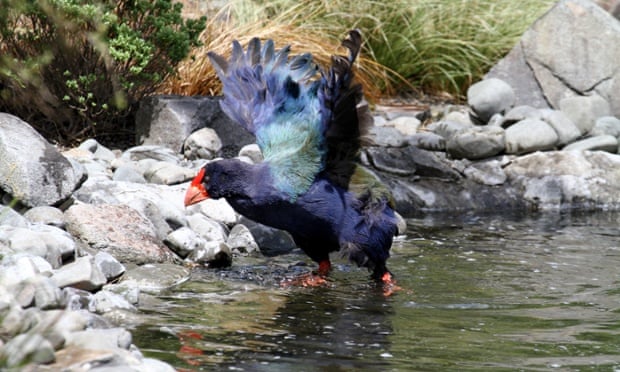
Giant land-dwelling birds, known as moas, were the undisputed kings, some as tall as 3.5 metres. These were not hunted by wild cats or canines but an equally impressive raptor, the Haast’s eagle. In all, the island was home to at least 115 bird species found nowhere else. And then people came. Within less than 150 years, the first humans – the Polynesian Maori – wiped out the moas, according to new research, and their top predator soon followed.
The Maori, followed not long after by the Europeans, brought with them new invaders: rats, dogs, cats, stoats, ferrets and pigs. Between overhunting by humans and destruction by invasive mammals, the islands lost more than 40% of its bird species. Many of those remaining, kiwi included, are periously close to extinction.
Long faced with a biodiversity crisis, New Zealand has often been willing to try experimental, some might say crazy, things to protect its vanishing species.
Rotoroa and Auckland zoo – The Making of an Island Sanctuary
“New Zealanders have become very good at killing things it doesn’t want,” says Wilcken. “It is one of the world’s leading countries in pest eradication … a really crucial conservation tool.”
But given the scale of invasive mammals, it’s now impossible to eradicate all of them from the mainland. This means that New Zealand has started setting up safe islands, like little Noah’s Arks, where threatened species can survive. Rotoroa is the newest addition to the fleet.
Ambitious plans
But before any animals could be brought to Rotoroa – kiwi or otherwise – a lot had to change on the island. The Salvation Army treatment facility was intended to be self-sufficient, so the organisation had cleared forests and native vegetation to make way for crops. There was little habitat left and, with the exception of a population of weka (Gallirallus australis, a small, flightless rail), very little survived on the island. Even the seabirds had largely abandoned it.

The head ecologist of the program, Jo Ritchie, describes Rotoroa Island as “an empty, silent house” before restoration began, which included demolishing buildings, clearing out crops and pine tress, and kickstarting a program to plant 400,000 native plants.
“Only small pockets of native coastal forest remained,” she says. “Most of the fruit and seeds were consumed as soon as they opened or ripened.”
Still, the “silent house” was filled with one familiar species: rats.
“Rats were everywhere and as we started the removal of buildings and planting their numbers exploded. They started eating our trees and made living in the houses on the island challenging at times,” Ritchie says, adding: “And then the Pied Piper came to visit.”
We are not restoring an ecosystem on Rotoroa Island; we are creating a managed ecosystem
Jonathan Wilcken
After the conservationists eradicated the rodents, planted new vegetation, and tore down buildings, the island was ready for its first new species. In May last year conservationists released 40 North Island saddleback (Philesturnus rufusater) and 40 whitehead (Mohoua albicilla) birds. Then in October they brought over the first North Island brown kiwi chicks (Apteryx mantelli). In February the first reptiles arrived: 50 moko skinks (Oligosoma moco). And next month the team plans to release the first takahē (Porphyrio hochstetteri), the world’s biggest rail and one of the country’s most imperilled birds: only about 300 survive.
“One of the things that we threw out very early on was the idea that we were restoring any ecosystem,” Wilcken says. “We are not restoring an ecosystem on Rotoroa Island; we are creating a managed ecosystem. And deliberately so.
“It’s a small island and if you were to just restore the ecosystem in biodiversity terms wouldn’t be that interesting.”
This will certainly be more than interesting. And conservationists aren’t just planning to bring in popular, charismatic birds, but insects, freshwater fish, and invertebrates as well over the next few years. Indeed, the 20 species chosen include five distinct animal classes.
Managing kiwi, skinks and takahēs
Once introduced on to the island, these species are not simply left to their own devices, but heavily managed. Take, for example, those brown kiwi chicks, which were never on the island originally. Each kiwi will have only a short stay on Rotoroa.
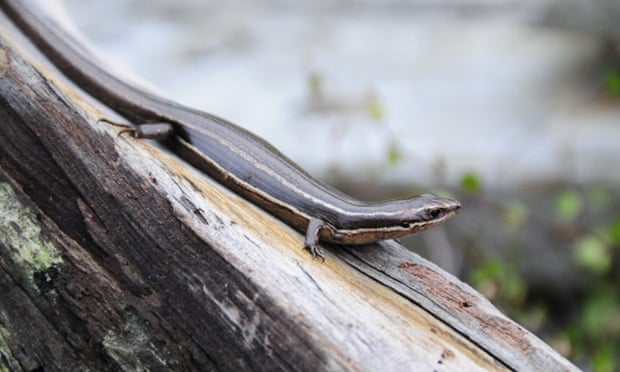
On mainland New Zealand, kiwi chicks rarely reach adulthood owing to predation by invasive mammals. According to Wilcken, kiwi chicks have only a 3% to 4% chance of survival on the mainland. So, to improve the odds for these iconic birds, conservationists will bring kiwi chicks to Rotora every year – about 20 – and let them grow up in the safety of the island. After about 18 months when they have reached maturity – and are better able to defend themselves – the young kiwi will be taken back to the mainland. In essence, Rotoroa will act as one giant kiwi nest.
Management plans are different for every species. For takahē, the plan is to bring only a pair of birds to start with. These will be older birds to free up prime breeding grounds on the mainland for younger, more prolific pairs. In other words, for kiwi the island is a nursury but for takahē, which can live for up to 20 years, a retirement community.
“We are aiming not to create an ecosystem we can walk away from,” Wilcken says.
The moko skink poses another management challenge. This rare lizard is a favourite prey of weka, which was one of the only original animals left on the island. To allow moko skinks to establish themselves, the team has built weka-free enclosures. And conservationists may consider more extreme measures in the future.
“Weka are known predators of reptiles, invertebrates, burrowing seabirds and some terrestrial bird species,” reads the plan. “For this reason it may be desirable to limit the population to a size below that which it might naturally reach, at least while other species that may be preyed upon by weka are being established.”
Ritchie says the reintroductions have gone incredibly well to date.
“[The animals] seem to love the island. It’s wonderful after all the hard graft of the initial work to walk and hear saddlebacks and whiteheads, see tui [a seasonal bird on the island] gorging themselves on flax flowers, know that kiwi chicks are present and see shorebird nests.”
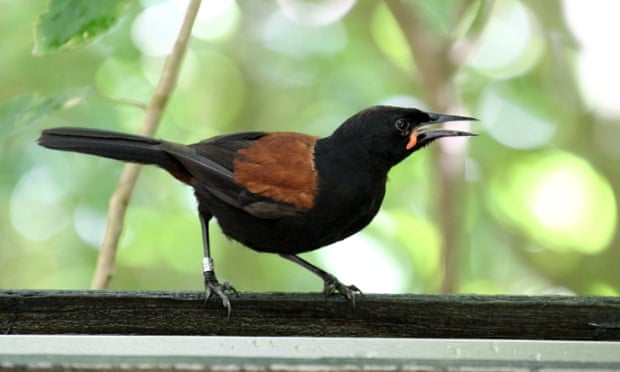
Those involved say the key to the project’s ambition and speed – four species introduced in less than a year – is the partnership between the privately run Rotoroa Island Trust and the public Auckland zoo.
“The work on Rotoroa has taken one fourth of the time it would normally take to do such a project … there is no bureaucracy – ideas are formulated, issues are raised – solutions found and decisions made quickly to get work done,” Ritchie says.
While Wilcken admits “there [has] been some resistance … to what we’re doing”, the most common reaction has been support.
He adds: “It helps that the island is frankly not a part of the government estate, it’s a privately owned island, it’s essentially land that we’re adding to conservation.”
Beyond conservation: education and training grounds
The Rotoroa plan is about much more than just threatened species. The team has built education and conservation training into every aspect of the project.
“We already bring school groups to the island and one measure of success is if we see people who’ve been to the island on a school group this year and in 10 years time they’ve grown up, seeing the island growing up,” Wilcken says. “And they have felt that they’ve been a part of the development of the ecosystem, they’ll have a very, very strong engagement.”
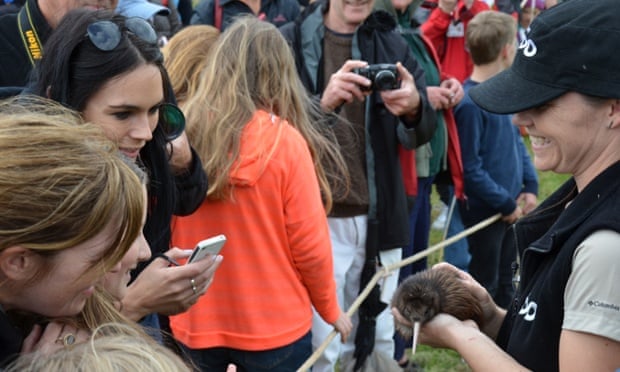
And it’s not just school groups visiting the island – anyone can go. Daily ferries take just a little over an hour from Auckland. There are now options to stay overnight in a hostel or holiday houses. Visitors will be able to see an island in transition, according to Onnie Byers of the Conservation Breeding Specialist Group.
“Rotoroa Island will look and feel like a restoration process in action, illustrating to visitors an active interventionist approach to ongoing wildlife management.”
The hope is to use the island’s brave new conservation efforts as a way to imprint on visitors what is possible.
“The unexpected opportunity to see kiwi chicks just a few weeks old, during the daytime, and without any barrier between themselves and the bird, will make a connection that people will remember for the rest of their lives,” reads the conservation plan.

Now that the island is already hopping with introduced species, the zoo is planning to use it to help train conservation workers in management techniques.
“The next piece that we are working on at the moment is being able to really realise the potential of the island as a field conservation training site,” Wilcken says. “We would be training people in the use of intensive wildlife management in order to support wildlife recovery and also in some philosophies of different ways of looking at conservation success and different ways of thinking about conservation success.”
The active zoo
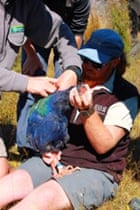
With its efforts on Rotoroa, Auckland zoo is bucking the traditional role of the zoo as focusing solely on the animals inside its walls and leaving everything outside to field conservationists.
“[Rotoroa] blurs the line,” Byers says, “redefines the role of a zoo, and gives the public direct access to intensive population management – the type of management that is essential for the survival of an increasing number of species around the world.”
Wilcken argues that zoos – with their wildlife veterinarians, their knowledgeable keepers and their decades of experience working hands on with wildlife – have much to offer field conservation. Zoos maintain “what are relatively rare skills that are increasingly important in helping to manage species in crisis”, he says.
“If we are … interested in maintaining and preventing the extinction of [charismatic] animals, there will be wildlife management in some kind or another. What we do in the zoos is the extreme end of wildlife management …
“Traditionally, what we have aimed for in [field] conservation is the extreme other end, where species don’t need any management.”
He notes: “We’ve got to operate a lot more in the middle … Realistically, we’ve got to learn how to manage biodiversity. “
Wilcken adds that “Rotoroa is a great manifestation of the logical progression from that idea”.
Plus, in a time when environmental doom and gloom has become the norm, Wilcken says zoological institutions offer a fresh perspective.
There is not one single view of conservation. We are in crisis and all approaches must be explored
Onnie Byers
“We are optimists by nature because we seek quite deliberately a design at that connecting point between wildlife and people. We don’t see those two as different things. We see the two in one snapshot, as it were. And success should be not one to the exclusion of the other.”
Wilcken admits that not all zoos may be able to take a leap similar to Auckland zoo and that financial constraints are often the biggest barrier to zoo involvement in field conservation. “You need to make sure [finances] doesn’t take up all of your focus. You have to remember why the zoo exists in the first place.”
Is Rotoroa the future of conservation?
In the next two months, tiny Rotoroa will welcome its fifth new species: the takahē. This brilliantly coloured, bizarre-looking bird was thought extinct until conservationists discovered a tiny population in 1948. Its survival is a symbol of the resilience of nature, while its arrival on Rotoroa will mean the giant rail’s range is expanding to a place it never would have gone without human help.
“There is not one single view of conservation,” Byers says. “We are in crisis and all approaches must be explored and promising ones developed. That’s what’s happening on Rotoroa Island and this will serve as a model.”
Indeed, the early success of Rotoroa’s plans – there are still 16 more species to be reintroduced over the next few years – raises a number of questions about the future of conservation. It is a part of a new model of conservation that doesn’t seek to return an ecosystem to some earlier time but recognises that humans have been drastically shaping nature for tens of thousands of years.
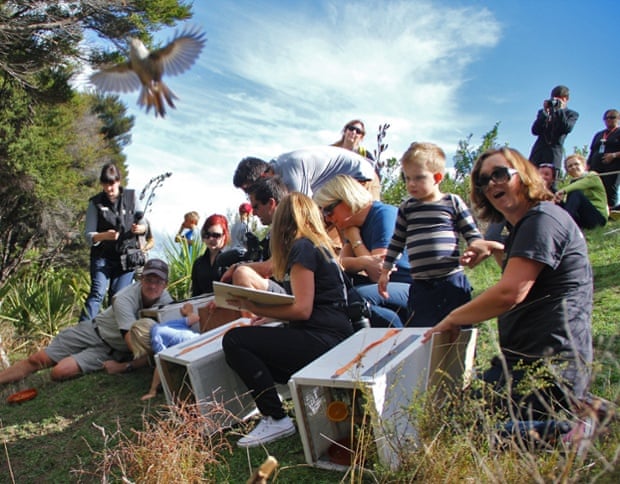
“If you’re trying to paint conservation success in recreating past ecosystems and that’s an ecosystem before people arrive, what have we got to do with it?” Wilcken asks. “What’s our role? In a successful ecosystem? … Just looking in from the outside.”
Instead of trying to rewind to some past theoretical ecosystem, these new conservationists are more interested in creating ecosystems for a future that includes invasive species, booming population growth, biodiversity upheaval and continuing climate change.
“[This is] not something we’ve invented … there’s a shift in conservation thinking in general or conservation philosophy in general,” Wilcken says.
Conservationists are heatedly debating that shift, since both the ideas behind it – and its possible implications – remain controversial. But the new ideas need testing grounds, which makes places like Rotoroa so important.
Indeed, Rotoroa is already becoming an ecosystem that, according to nature, was never supposed to be. But, here it is for all that: booming with the songs of rare birds, rearing up baby kiwi, racing with threatened skinks, and soon welcoming one of the rarest birds on the planet. It’s argubaly a tiny bright spot in a wash of what’s often seen as conservation gloom, a sanctuary for a nation’s beloved species, and a place that proves Homo sapiens don’t have to only destroy nature – maybe we can create it, too.
This article was first published by The Guardian on 21 Apr 2015.
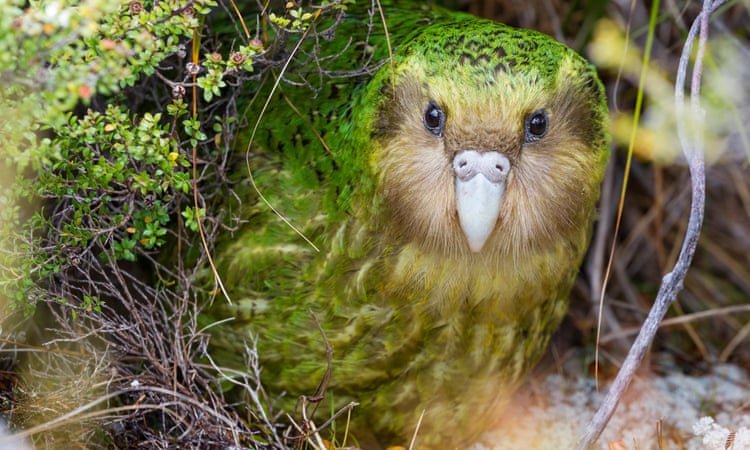
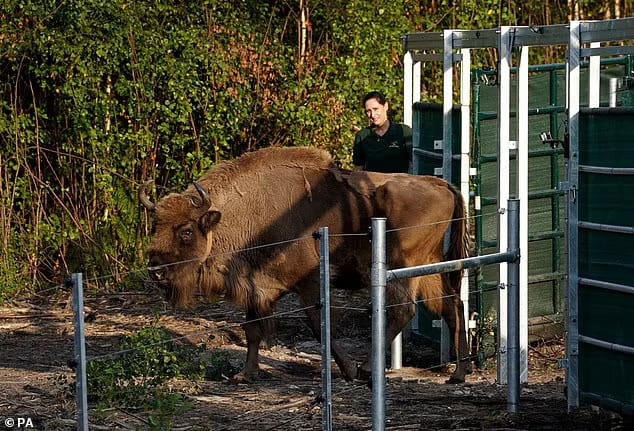
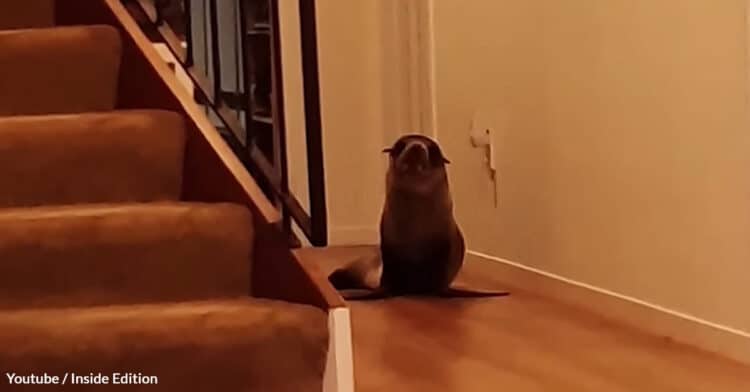
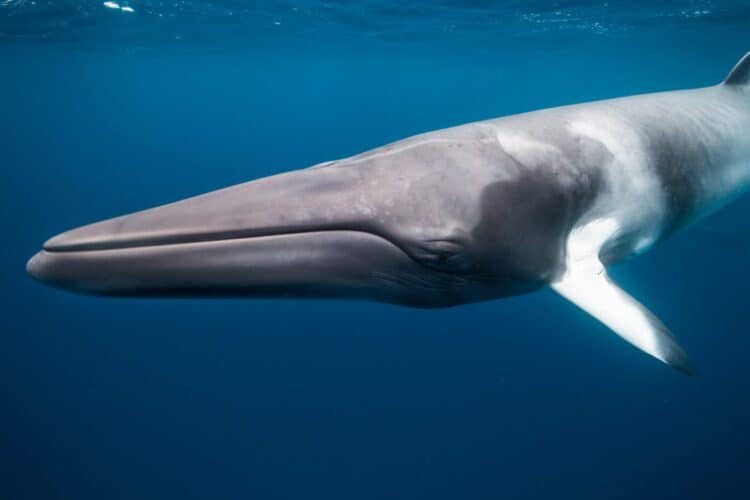
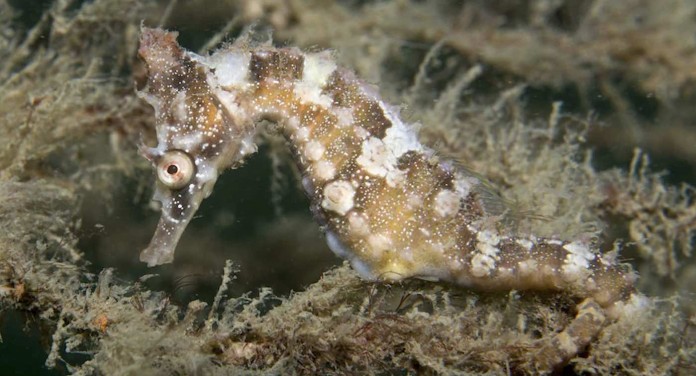
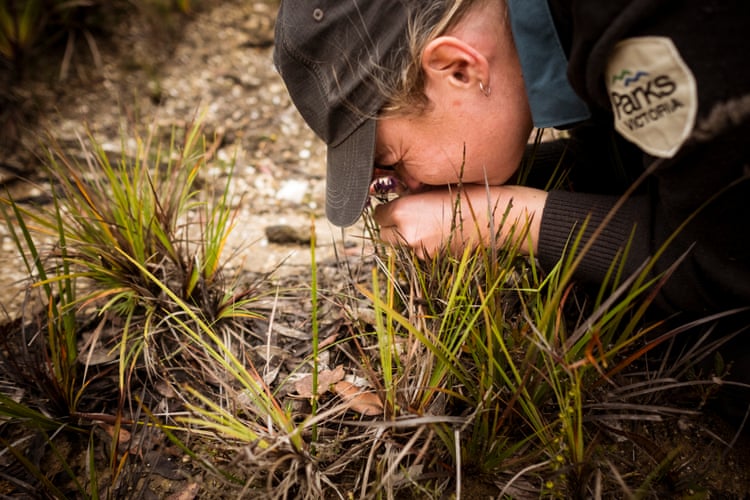
Leave a Reply